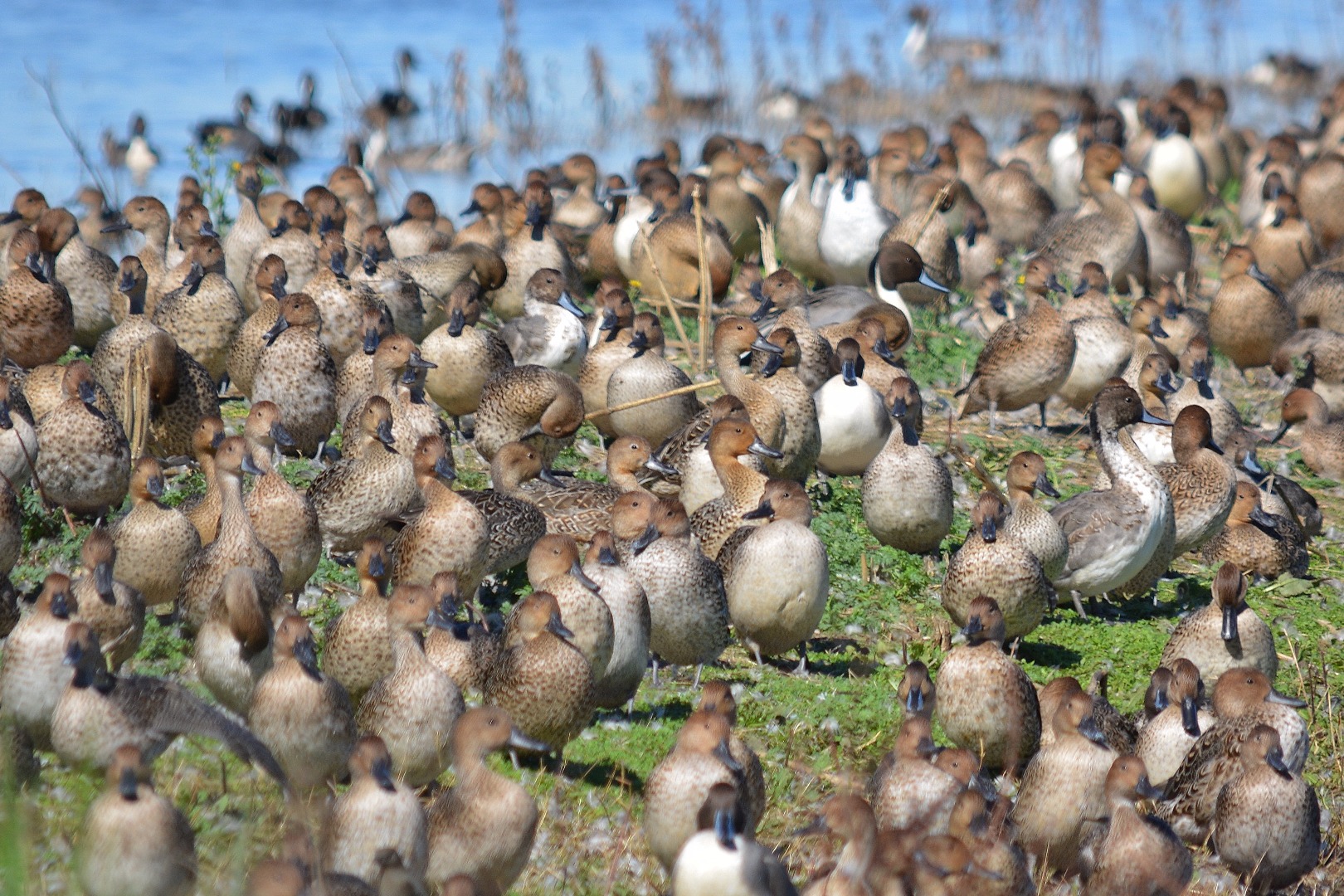Fish Report for 11-22-2016
The Most Beautiful Duck in North America

by Steven T. Callan
11-22-2016
Website
Ask any waterfowl enthusiast to name the most beautiful duck in North America, and he or she will most likely point to the brilliant, multicolored, drake wood duck (Aix sponsa). Others might claim that the iridescent green head of a drake mallard (Anas platyrhynchos) is hard to beat. For me, the graceful pose of a drake pintail (Anas acuta), with its long, slender neck and chocolate-brown head, places this species at the top of the list.
I’ve been fascinated with waterfowl since I was a boy growing up in Orland, California. Our home was located directly in line with the migration route of thousands of waterfowl heading south to the Willows rice fields. Most of the birds traveled by night, but during warm November storms, when the powerful south wind whistled up the valley, ducks and geese flew throughout the day. Pushed back and forth, up and down, and side to side by the unrelenting wind, flock after flock passed overhead, sometimes just above the treetops. This seasonal phenomenon was quite a sight to see. It also provided me with a golden opportunity to hone my identification skills.
Most of the geese that passed overhead during the 1960s were snows (lesser snow geese, Chen caerulescens caerulescens), specks (white-fronted geese, Anser albifrons), and cacklers (cackling geese, Branta hutchinsii). Only rarely would a flock of honkers (western Canada geese, Branta canadensis moffitti) appear.
Ducks flying over the house were a mixed bag of mallards, wigeons (Anas americana), green-winged teal (Anas carolinensis), gadwalls (Anas strepera), pintails, and occasional divers. Some were tricky to positively identify, but there was no mistaking the sleek silhouette of the drake pintail, with its pencil-thin neck, white underbelly, and long, black tail. During the late fifties and early sixties, the pintail was one of the most predominant species of wild ducks in the Pacific Flyway.
What is it about pintails that piques my interest and fascinates this waterfowl aficionado so? The simple elegance of the bull sprig makes it stand out in a crowd. The distinct markings and delicate lines of the hen pintail are just as impressive -- almost as impressive as the extreme measures she will take to protect her young. Call it instinct or call it courage -- no other duck is more fearless in the face of danger.
Pintails are one of the first ducks to migrate north in the spring and one of the first to head south in the fall. As a Fish and Game warden patrolling the Colorado River during the 1970s, I counted on seeing flocks of pintails heading south into Mexico by early September. It wasn’t without awe that I watched them bolt from the sky with the precision of guided missiles, set their wings at the last second, and land on a sandbar in the middle of the river. The next day, they’d be gone.
Sadly, pintail numbers have fallen dramatically since the 1960s. Based on U.S. Fish and Wildlife estimates of North America’s 2016 waterfowl breeding populations, their numbers are still 34% below the long-term average of four million birds. Drought and the continued loss of critical grassland nesting habitat are, in large part, responsible for the decline of this web-footed wonder.
Just last week, Kathy and I ventured out to the Sacramento National Wildlife Refuge for our annual fall pilgrimage. “Every pintail in the Pacific Flyway must be right here in this corner of the refuge,” I told Kathy. “What a sight!” The next day I contacted the refuge and learned that 238,000 pintails were counted during the most recent survey. It did my heart good to know that awe-inspiring sights like this are still possible. Thanks to state and federal wildlife agencies, our national wildlife refuge system, and conservation groups like Ducks Unlimited, efforts are being made to conserve nesting habitat, provide winter habitat, and return species like the northern pintail to the numbers they enjoyed long ago.
If you’d like to see the huge congregations of pintails and other early migrants for yourself, the Sacramento National Wildlife Refuge is a good bet. Its auto tour is open an hour before sunrise to an hour after sunset. Be sure to bring your binoculars and your camera.
Steven T. Callan is the award-winning author of The Game Warden’s Son, named “Best Outdoor Book of 2016” by the Outdoor Writers Association of California and published by Coffeetown Press of Seattle. His debut book, Badges, Bears, and Eagles—The True-Life Adventures of a California Fish and Game Warden, was a 2013 “Book of the Year” award finalist (ForeWord Reviews).His upcoming book, Henry Glance and the Case of the Missing Game Warden, a novel, will be released in 2020. Steve is the recipient of the 2014, 2015, and 2016 “Best Outdoor Magazine Column” awards from the Outdoor Writers Association of California. He can be found online at steventcallan.com.
Photos
More Reports
Winter Driving - Avoid a Speeding Ticket

11-14-2016
Every winter at the collision repair center I talk to drivers that received a speeding ticket after they had a...... Read More
Sacramento River Trout Report
Sacramento River - Lower
11-13-2016
Many guides and anglers are finding the catch rates slow in the Redding area for Sacramento River Rainbows. Some are...... Read More

Website Hosting and Design provided by TECK.net







